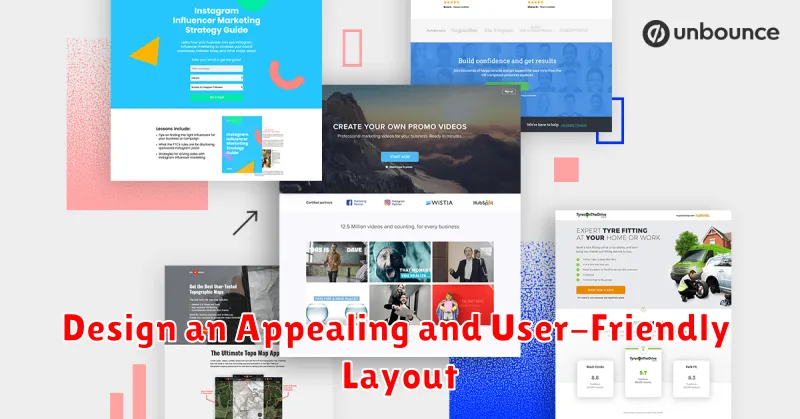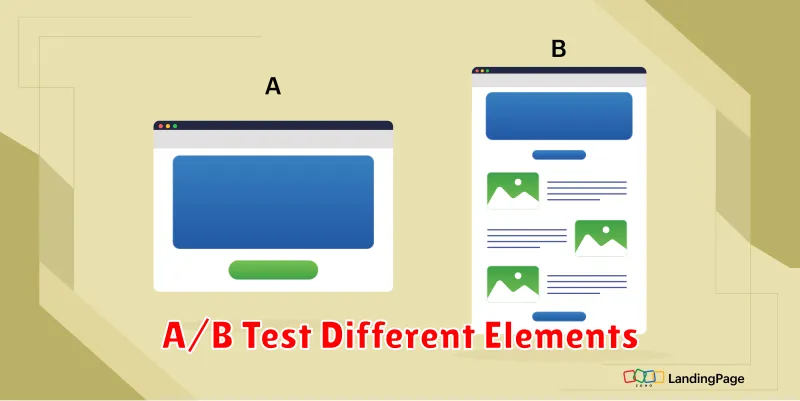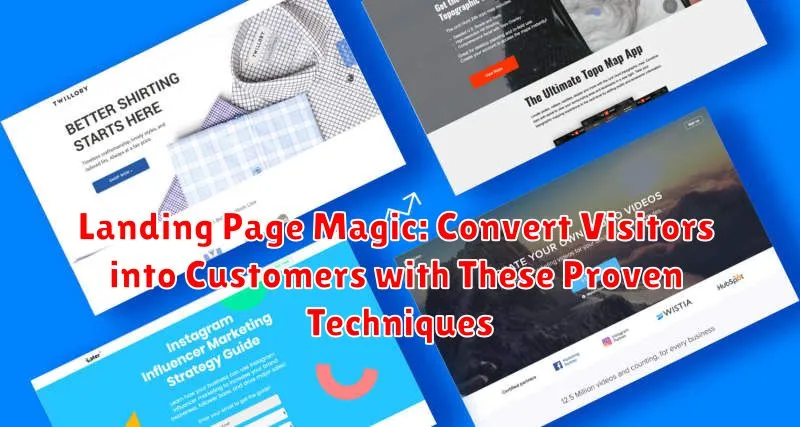In today’s digital landscape, a high-performing landing page is crucial for converting website visitors into paying customers. Landing Page Magic isn’t just a catchy phrase; it’s the achievable result of implementing proven techniques designed to optimize your conversion rates. This article delves into the essential strategies that transform ordinary landing pages into powerful customer acquisition tools. Learn how to captivate your target audience, build trust, and ultimately drive conversions with a landing page that truly works.
From crafting compelling headlines and persuasive copy to optimizing call-to-actions and streamlining the user experience, we’ll explore the secrets of landing page optimization. Discover how to effectively use data and analytics to refine your approach and maximize your return on investment. Whether you’re a seasoned marketer or just starting out, these proven techniques will empower you to create landing pages that deliver exceptional results and contribute significantly to your business growth. Master the art of converting visitors into customers and unlock the true potential of your online presence.
Define Your Target Audience
Before designing your landing page, clearly define your target audience. Understanding your ideal customer is crucial for crafting a message that resonates and drives conversions. Knowing their demographics, psychographics, online behavior, and pain points will inform every aspect of your landing page design.
Consider these key questions:
- What are their demographics (age, gender, location, income, education)?
- What are their interests, values, and lifestyle?
- What are their online habits (social media platforms, search engines)?
- What problems are they trying to solve?
- What are their motivations and goals?
Creating buyer personas can be a helpful exercise. These semi-fictional representations of your ideal customers bring your target audience to life, making it easier to tailor your messaging and design choices.
Craft a Compelling Headline and Value Proposition
Your headline is the first, and often only, impression you make on a potential customer. It needs to grab their attention and entice them to read more. A strong headline clearly communicates the primary benefit of your product or service. Think about what problem you solve and highlight that solution instantly.
Beyond the headline, your value proposition is the key to converting visitors. It succinctly explains why your offering is superior and what unique value they’ll receive. Focus on the benefits, not just the features. What transformation will customers experience after engaging with your product or service? Will they save time, money, or gain a specific skill? Clearly articulating this value is crucial for persuading visitors to take the next step.
Consider using techniques like A/B testing different headlines and value propositions to identify what resonates most effectively with your target audience. Analyze the data to optimize your messaging and maximize conversions.
Create Clear and Concise Call-to-Actions (CTAs)
Your call-to-action (CTA) is the most crucial element of your landing page. It’s the instruction you give visitors, telling them what you want them to do next. A clear and concise CTA eliminates confusion and encourages conversions.
Effective CTAs use action-oriented language. Instead of weak phrases like “Submit” or “Learn More,” opt for strong verbs that create a sense of urgency or benefit. Examples include “Get Your Free Quote Now,” “Download Your Guide Today,” or “Start Your Free Trial.”
Keep your CTAs concise. Long, rambling calls-to-action can lose your audience. A few well-chosen words are far more impactful than a lengthy sentence.
The design and placement of your CTA button also matter. Use a contrasting color that makes it stand out from the rest of the page. Ensure it’s prominently displayed above the fold, so visitors see it immediately without scrolling. Consider A/B testing different CTA variations to determine what resonates best with your target audience.
Clarity is key. Visitors should understand instantly what will happen when they click the button. Avoid vague language and ensure the action aligns with the overall message of your landing page.
Design an Appealing and User-Friendly Layout

A visually appealing and easy-to-navigate layout is crucial for landing page success. A cluttered or confusing design can quickly deter visitors. Prioritize a clean, organized structure that guides the user’s eye towards the most important elements, like your call to action.
Whitespace plays a vital role in readability and visual appeal. Don’t overcrowd the page with content. Use ample spacing between elements to create a sense of balance and allow the content to breathe.
Consider using a responsive design to ensure your landing page adapts seamlessly to different screen sizes, from desktop computers to mobile devices. This is essential for reaching a wider audience and providing a consistent user experience.
Visual hierarchy is key. Use headings, subheadings, and bullet points to break up text and make it easier to scan. Emphasize important information with bold text or larger font sizes.
Use High-Quality Images and Videos
Visual content plays a crucial role in capturing attention and conveying your message effectively. High-quality images and videos can significantly enhance the appeal of your landing page and create a more engaging experience for visitors.
Choose visuals that are relevant to your product or service and resonate with your target audience. Ensure images are professionally shot, well-composed, and optimized for web use. Avoid blurry or pixelated images that can detract from the overall professionalism of your landing page.
Videos can be particularly effective in showcasing product demonstrations, testimonials, or explaining complex concepts. Keep videos concise and focused, delivering value quickly to maintain viewer engagement. Professional quality is essential for videos as well, ensuring clear audio and visuals.
Optimize for Mobile Devices
In today’s mobile-first world, ensuring your landing page is fully optimized for mobile devices is no longer a luxury, but a necessity. A seamless mobile experience is crucial for converting visitors into customers.
A mobile-optimized landing page should load quickly and be easy to navigate on smaller screens. Responsive design is key here, allowing your page to adapt and display correctly across various devices and screen sizes.
Consider these key elements for mobile optimization:
- Page Speed: Minimize loading times by optimizing images and streamlining code. Slow loading speeds can lead to high bounce rates.
- Touch-Friendly Design: Buttons and other interactive elements should be appropriately sized and spaced for easy interaction on touchscreens.
- Simplified Forms: Keep forms short and concise. Minimize the number of fields required to reduce friction for mobile users.
- Clear Call to Action: Ensure your call to action (CTA) is prominent and easily accessible on mobile devices. Use a clear and concise CTA button.
Build Trust and Credibility
Trust is the cornerstone of any successful online conversion. Visitors need to feel confident that your business is legitimate and that their information is safe. Clearly displaying contact information, including a physical address, phone number, and email address, demonstrates transparency and accessibility.
Showcase testimonials and reviews from satisfied customers. Authentic feedback builds social proof and reassures potential customers about the value of your product or service. Consider incorporating a dedicated section on your landing page for testimonials, or integrate them strategically near call-to-action buttons.
Security badges and certifications can further enhance trust. Displaying recognized security logos, like SSL certificates, assures visitors that their data is protected. This is especially important for landing pages that collect personal information or process payments.
High-quality design and professional copy also contribute to credibility. A well-designed landing page that is free of errors and presents information clearly demonstrates professionalism and attention to detail. This reinforces the perception that your business is trustworthy and reliable.
A/B Test Different Elements

A/B testing, also known as split testing, is a crucial aspect of landing page optimization. It involves creating two versions of your landing page with variations in certain elements, then randomly showing each version to different segments of your audience. This allows you to compare their performance and determine which version converts visitors into customers more effectively.
Key elements to A/B test:
- Headlines: Experiment with different wording, length, and phrasing to see which resonates best with your target audience.
- Call-to-Action (CTA) Buttons: Test different colors, sizes, placement, and text on your CTA buttons.
- Images and Videos: Try different visuals to see which ones capture attention and communicate your message effectively.
- Form Fields: Experiment with the number and type of form fields to find the optimal balance between information gathering and user experience.
- Page Layout: Test different layouts and content arrangements to optimize flow and user engagement.
By systematically testing different elements, you can identify the winning variations that drive the highest conversion rates. Remember to test one element at a time to accurately isolate the impact of each change. Analyze the results and use data-driven insights to continually refine your landing page for optimal performance.
Use Analytics to Track Performance
Data-driven decision making is crucial for landing page optimization. Implementing analytics tools allows you to understand visitor behavior and measure the effectiveness of your landing page strategies. By tracking key performance indicators (KPIs), you gain valuable insights into what’s working and what needs improvement.
Essential metrics to monitor include conversion rate, bounce rate, time on page, and exit rate. Analyzing these metrics helps identify areas of friction in the user experience. For instance, a high bounce rate may indicate that your landing page content isn’t resonating with your target audience or that the page is loading too slowly.
Utilize analytics platforms like Google Analytics to set up conversion goals and track progress towards your objectives. Regularly reviewing your analytics data empowers you to make informed adjustments to your landing page, ultimately leading to higher conversion rates.
Continuously Improve and Refine Your Landing Page
Creating a high-converting landing page isn’t a one-time task. It requires ongoing optimization and refinement. The digital landscape is constantly evolving, and user behavior changes over time. Therefore, continuous improvement is essential for maintaining peak performance.
Regularly analyze your landing page metrics. Look for areas where you can improve conversion rates, bounce rates, and time spent on page. Small changes can make a big difference.
Experiment with different variations of your landing page elements. This could include testing different headlines, calls to action, or even the layout of your page. This process of iterative improvement helps you identify what resonates best with your target audience and drives the desired actions.

